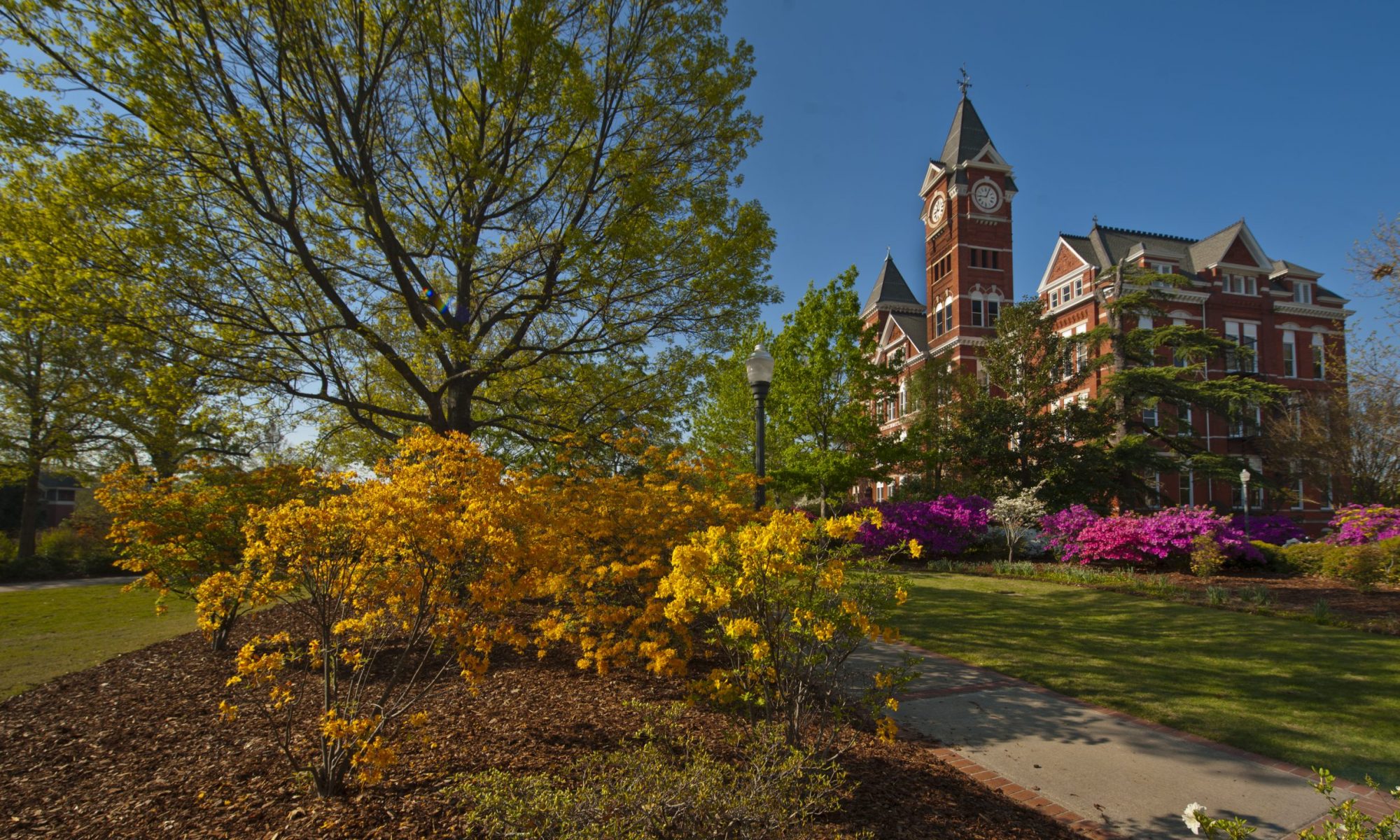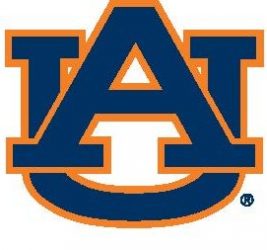By Katherine Buck Chastain
The College of Architecture, Design and Construction, or as we call it the CADC, is a community of designers and thinkers, builders and makers, leaders and stewards. We have more than 100 faculty and staff teaching and supporting about 1,550 undergraduate students studying in six programs.
Our students learn to create, design, and build the world around us. Learn more about our programs from some of our faculty and students below:
Allie Pelafos — Architecture and Interior Architecture

Auburn’s Architecture program, founded in 1907, is the oldest Architecture program in the south and is consistently ranked among the top 15 Bachelor of Architecture programs in the country by DesignIntelligence. Allie Pelafos is a 5th year senior from Champaign, Illinois and she says she chose Auburn because of how many opportunities the program offered. “I instantly felt at home on campus. I was looking at the top ranked Architecture and Interior Design programs in the country. The Architecture/Interior Architecture concurrent degree gave me the opportunity to achieve both goals within 5 years. Learning the ins and outs of a building while creating so many connections so early on in my career was a chance I could not pass up.”
As a third year student Allie was selected for our degree program in Interior Architecture, which is offered concurrently with the Bachelor of Architecture degree. She also traveled to Rome through the Architecture program’s study abroad opportunities. “Being able to immerse yourself as a student allows you to learn so much about yourself and others that you can apply to projects long term.”
Allie is the 2021-2022 CADC Ambassador President. “I recommend prospective students who are looking at Architecture school to also consider the university as a whole. You want to pick a place that offers enough opportunities where your education will flourish through your individual interests and goals.”
Upon graduation in May Allie hopes to serve others through architecture. “I want to use my degrees to better the lives of others. Maybe healthcare design? I am keeping options open and looking forward to thesis year!”
Logan Bozeman — Building Science

Our Bachelor of Science in Building Construction degree focuses on construction management and teaches students how to execute, plan and manage construction projects from beginning to end. McWhorter School of Building Science alumni become estimators, project managers, virtual design construction managers and superintendents at construction companies all over the world. Logan Bozeman, a senior from Wetumpka, Alabama, is soon to be one of those alumni!
Logan will graduate from Auburn Building Science in December and is looking forward to his transition into industry. “One of the biggest things I am looking forward to is getting to work on a project from the ground up. I can’t wait to see something come together and look back on it for years and say, ‘I was a part of building that.’ ”
During his time in the program Logan has been involved in student organizations like Associated General Contractors (AGC) Student Chapter and is a CADC Ambassador. He has also been a member of three regional and national competition teams. “I enjoy competition teams because they give you real world experience on what you will be doing after college: things that range from estimating to making a schedule to running a company.”
Upon graduation Logan hopes to move into a pre-construction or project management role with a general contracting company. When asked why he chose Auburn’s Building Science program Logan said, “I grew up playing with Legos and games like Minecraft and thought that would lead to architecture, but I realized the hands-on component that existed in Building Science was my true passion.”
Katie Henry — Environmental Design

Environmental Design is the broadest, most flexible degree offered in the CADC. Students in the program learn core knowledge of all design and construction fields as well as business practices related to human-designed environments. Sustainability is woven throughout the curriculum, and together these subjects lead our students to become extremely versatile and prepared for anything the industry could throw at them. Katie Henry, a senior from Hartselle, Alabama, is finishing her final studio this semester. “I chose to major in Environmental Design because I am the type of person who likes to know a lot about everything. Environmental Design allows me to scratch every itch when it comes to my desire for knowledge. We specialize in systematic thinking and systematic design. I believe everything is connected and my degree allows me to find those connections.”
It is a common theme among Environmental Design students to want to positively impact the world with their creations. Katie is no exception. “I hope in 10-15 years I can be a part of starting a non-profit organization that serves orphans in third world countries. So much of what we learn in Environmental Design focuses on understanding sustainable design. There are many third world countries who do not use their resources to the fullest extent. I hope to work with world leaders to improve the designs of orphanages throughout the world through my non-profit. “
As President of the Environmental Design Student Organization, Katie participated in the Environmental Protection Agency (EPA) Rainwater Challenge. “Competitions are not for the faint of heart! Patience, team collaboration, managing others, typography, time management and most of all leadership skills. I recommend everyone to take the opportunity, if given, to manage a design team because it allows you to become a better designer.”
Kaiyah King — Graphic Design

Graphic Designers use words, pictures, typefaces and graphics to convey messages, often to large groups of people. From logo and stationery design to interactive media like website design and motion graphics, visual communication is their specialty.
Kaiyah King, a senior from Energy, Illinois, holds two on-campus jobs, served as the VP of Marketing and Communications for the Black Student Union (BSU) for the past two years, is the on the Board of Directors for the Student Alumni Association and is a CADC Ambassador. When asked about how she manages all her involvement and a design major she says, “I am consistently working on my time management skills. You never achieve perfect time management. It requires constant attention. If you love what you are doing and what you are involved in, you make time for it all.”
As a CADC Ambassador Kaiyah gives tours to prospective students and her favorite piece of advice to share is about exploring options for student involvement. “Experiment freshmen year joining different organizations and networking throughout campus. There is a chance what you are involved with in freshmen year will be different than senior year. It’s okay to allow your interests to evolve as you grow and mature. Every experience or group helps mold who you become.”
Recognized as one of Graphic Design USA’s top programs, Auburn Graphic Design pushes students to become the best designers they can be. Kaiyah believes that the rigor of the program is why our alumni are successful upon graduation. “During one of my visits to campus, I saw the Senior Design Show. It inspired me because I knew if I graduated as an Auburn Graphic Designer, I would leave with the education that taught these students to do this incredible work. Now that I am a rising senior, I realize there are so many different career pathways in Graphic Design. The curriculum has taught me a little bit of everything. I look forward to using what I have learned in industry.”
Roshani Trivedi — Industrial Design

Consistently ranked among the top ten Industrial Design programs in the country, Auburn’s Industrial Design program is known for its unique curriculum in product design and product innovation. Roshani Trivedi, a senior from Knoxville, Tennessee, chose to major in Industrial Design because it combined artistic creation with helping others. “I knew I wanted art as a part of my career, but a fine art degree would have lacked a technical, functional aspect which I was also seeking. I wanted to help people with my work.”
When it came to choosing a school, Roshani looked all over. Finding a program that had the perfect combination of art and engineering was no small feat, but Auburn fit that search perfectly. Roshani has worked on a number of different projects in her studios. In just the past year she has designed packaging with Pratt Industries; worked with the Marine Discovery Center in New Smyrna Beach, Florida on master planning; designed and fabricated a chess set in collaboration with students in Ireland; designed, fabricated and installed a bike rack for Innovation Portal in Mobile, Alabama; and most recently designed guitar mounts and completed the exhibit design for the Fret Haus Senior Design Thesis Exhibit at the Alabama Contemporary Arts Center in Mobile, Alabama. Roshani says the Fret Haus Guitar Exhibit Design was her favorite. “I really enjoyed starting with the big picture concept and then working through it until seeing it on opening night. It was very fulfilling to see the senior students show off their work to friends and family through the exhibit we created. Exhibit design is a subtle aspect of design as people are there to see the work in the exhibit not how you set it up, but it is such a crucial aspect of the exhibit.”
This summer Roshani served as a student assistant for the Industrial Design summer camp at the futures studio in Mobile, Alabama. When asked about her favorite part of sharing the Industrial Design program with the campers she said, “I love getting to know people. Getting to introduce the students to something that I love so much was an honor. I personally struggled as a high school student trying to figure out what I wanted to do. Being able to help these students start their journey to find their passion was amazing.”
Professor David Hill — Landscape Architecture

We are excited to launch our Bachelor of Landscape Architecture program in the fall 2021 semester. Landscape Architecture students will learn to imagine, design and build the 21st century’s landscapes during their time with us. Our program will teach students how to engage many of the most pressing issues the world faces today through intentional design of outdoor spaces.
Program Chair David Hill says, “The discipline of landscape architecture continues to expand in its ability to make meaningful, positive impact in people’s lives and we look forward to continuing to explore how our students can engage the dynamic relationship between society and the land.”
With so many wonderful things going on in the CADC, we know the fall 2021 semester will be one of our best yet. We look forward to starting another year of creating, designing and building.






